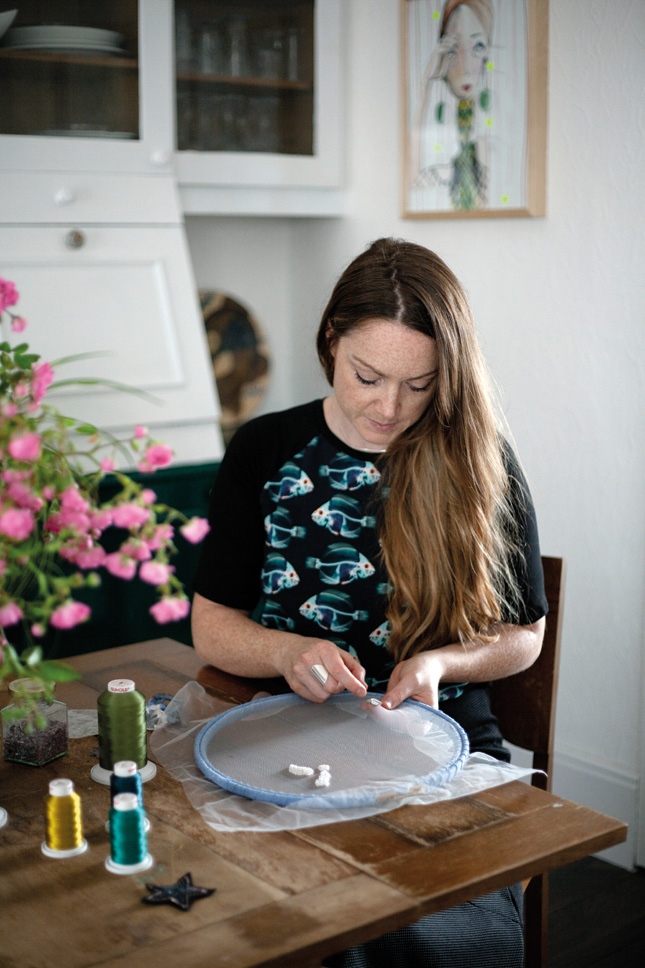
Jill de Búrca is a sought after Embroidery and Embellishment Designer who has sold her creations to a wide range of international designers including Calvin Klein, Diane Von Furstenberg, BCBG Max Azria, JCrew, Topshop, and Thurley .
Jill studied textiles and specialized in Embroidery for her degree at NCAD Ireland, after which she moved to the UK to train with Larch Rose, a highly creative fashion and textile studio who were dedicated to producing innovative and directional work for the fashion industry. Later she trained with Jenny King master embroiderer and worked on the production of Erdem’s exquisitely embroidered clothes. Other clients included Stella McCartney and Mary Katrantzou . Her own clothing designs are fashion forward but utilise techniques and craftsmanship from the past. She uses an Irish Singer Embroidery machine to free-hand satin stitch, which is a skill rarely used today.
Jill talks to Sonnets and Dirty Dishes about learning to protect what she loves most, and the health benefits of a studio companion who demands to be brought for regular walks.
BEGINNINGS:
In this section we ask makers to talk about what started them down the road they are on – how did it begin? On Sonnets and Dirty Dishes, we want to explore what motivates people to take the leap from dreaming, to doing. We ask: Can you tell us what drives you to do what you do?
JILL: “I am still uncomfortable describing myself as fashion designer even though I do make clothes. I feel I am a textile / embroidery designer first and foremost.
I guess I’ve always been interested in making and doing and never really looked at any alternative other than Art collage. I had no idea what I would end up doing but I gravitated towards textiles and fashion and specialised in embroidery at NCAD.
My mam and great aunts were always sewing and knitting. I love the making process and this is something that has always influenced the way I work. I started working in a small fashion design studio when I moved to Brighton and it really cemented the love of making. We did everything in house, from hand dying, designing embellishments and prints to cutting and constructing the clothing. It was an incredible learning experience. It’s still an important part of my practice, making everything in our little studio.
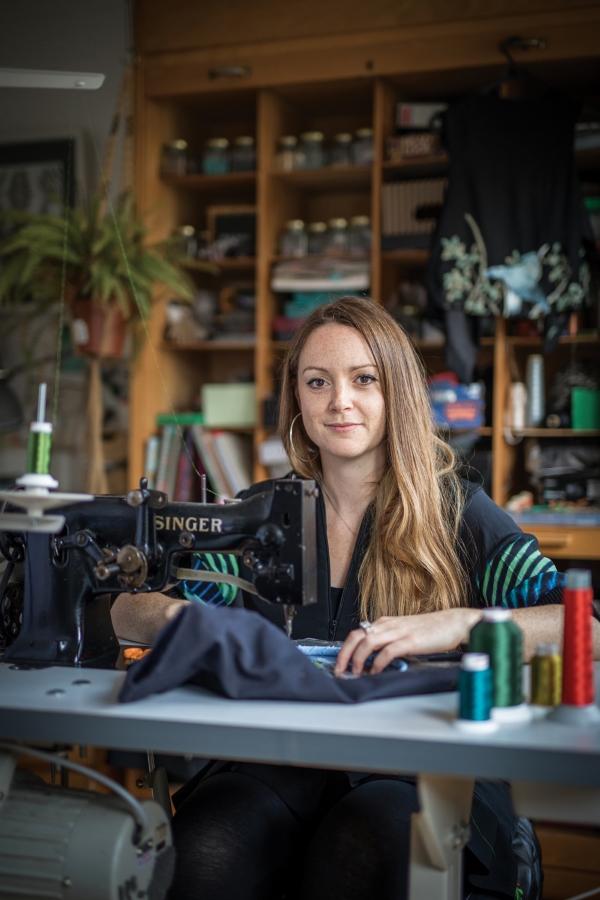
PRACTICALITIES
In this section we ask makers to talk about their workspaces, tools, and resources they need. We ask what their work day looks like. We also ask them to respond personally to the Sylvia Plath quote that gives this project its title: ‘I would live a life of conflict, of juggling children, sonnets, love and dirty dishes.’
“After collage I was stuck in a desk job and wasn’t using my degree, doing what I loved. I felt adrift and found it difficult to find a fulfilling job that paid a living wage. I decided if I wanted to really give it a go I had to go and get some experience abroad and moved to the UK. That desk job gave me a taste of what I didn’t want and this was a huge motivator, trying to find what I did want to do, and make it work!
No job I had in the UK was 9-5. It was really long hours but I was really driven and happy learning new skills. I went from intern to running the embroidery department in a short time.
I learned to use an Irish Singer free-stitch machine while interning at Jenny King and fell in love with it. I got to work on my technique while working on collections of some of the biggest names in London fashion Week. When I decided to move home I wanted to continue working in a studio and making so this was a big motivator in setting up a studio in Dublin.

PRACTICALITIES
In this section we ask makers to talk about their workspaces, tools, and resources they need. We ask what their work day looks like. We also ask them to respond personally to the Sylvia Plath quote that gives this project its title: ‘I would live a life of conflict, of juggling children, sonnets, love and dirty dishes.
“I have a studio down the end of my garden. I have always wanted a studio where I live. I worked from home for years and it was quite difficult. Taking out all my work and at the end of the day having to put it away again was frustrating.
My studio is now a treasure trove of fabrics, threads, beads and things I’ve collected over the years. I’ve always collected bits to use in my work or that inspire me. When I lived in Brighton we had the luxury of a man visiting the studio with a van full of vintage trims and glass beads from an old factory in France. It was like Christmas and I still have lots of vintage threads, trims and beads. I also bought a vintage haberdashery display cabinet from a shop that was closing down, and an architect’s plan chest which I had a desk custom built around at waist height, so I can stand and work around the table.
My most precious pieces are my sewing machines. I bought my Vintage Irish Singer sewing machines from a lady in Newry. They don’t make them anymore. The one I use is over 70 years old. I was very lucky to get them as they are so rare to come by. The woman had used them since she was twelve when she started working in a factory in Northern Ireland and used them all through her life until she had to retire. It’s an amazing workhorse, still perfect and I feel lucky to have them.

“It’s taxing on the body to sew intensively all day“
“My work day varies from day to day. In between my own work, I teach Textile Theory, Fabric Manipulation techniques and Embroidery part-time to 3rd level students and I am also currently doing a masters at in Education, Training and Learning. No matter what I’m doing, my day always starts with taking my dog for a walk first thing.
I spend a lot of time working solo so my dog is great company and also I have to leave the studio to go for walks, so good for my health overall. It’s taxing on the body to sew intensively all day so I tend to do a few hours on the machine and then change it up. I make a list each week and work through it crossing things off as I go. I’m lost without to do lists!

“I decided to concentrate on the parts of the work I loved“
“My work life balance is better but still not perfect and I think that’s something that will forever be in flux. I have changed the way I work in recent times and I now only do bespoke embroidery jobs. This allows me to pick and choose work that excites me, and concentrate on the most important bit, which for me is the embroidery.
Running a label takes an incredible amount of time and energy. I had little left for myself and felt like I was going to burn out. You are not only a designer, you are production manager, sales manager, accountant, studio manager, promoter and everything else in between. It took me away from the creative process more and more, the busier I became.
I decided to concentrate on the parts of the work I loved which was the embroidery and making. This has also given me time to teach which has always been a part of my job as a designer that I loved. Training interns and sharing techniques is incredibly rewarding and fun. Teaching is also a break from the studio; it can be quite isolating at times working solo.
Sometimes putting too much pressure on your creative job to provide your entire income, creates too much pressure to succeed financially. I have become almost protective of what I love and finding other sources of income has in a way allowed me to continue to work the way I want to.
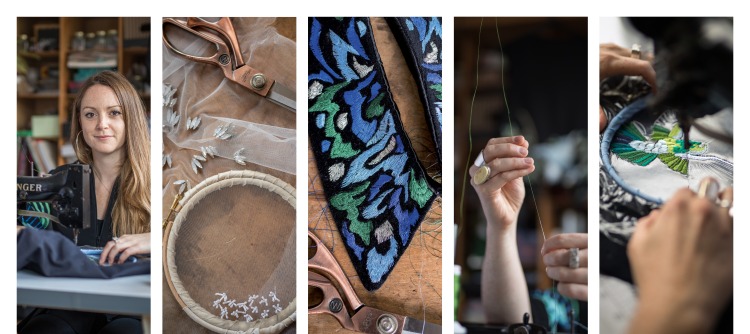
BEING IN THE WORLD
Publication, performance, recording, exhibiting. In this section we ask: how important is it to you that your work exists in a public space? Why do you think this is? And can you tell us about the time and effort you give to getting your work out in the world?
“I think having a deadline is the only way to get a project over the finish line, for me anyway! And having one such as a publication piece or exhibition is an extra push. Procrastination can be part of the creative process, thinking and sitting with an idea, but ultimately you need to set goals to move projects on and push them in ways you might not have if given all the time in the world.
It can be quite lonely during the creative process so sharing your work and connecting with people is an important part of it. I think having an “event” to unveil your work helps pushing you forward. It is still daunting and stressful but I think ultimately it’s good to be out of your comfort zone sometimes. Otherwise complacency can set in and stagnate your flow.
Sustainability and Ethical standards are an important part of my work. I don’t outsource and this is a conscious choice. A big part of the course I teach is about sustainability and our responsibility to the people in developing countries and the environment. I think if you are a designer today it’s important to make people aware of alternative options that are available other than the fast fashion throw away culture we have normalized. Craft and real creativity should be given the platform, to showcase the process and thought that has gone into it.
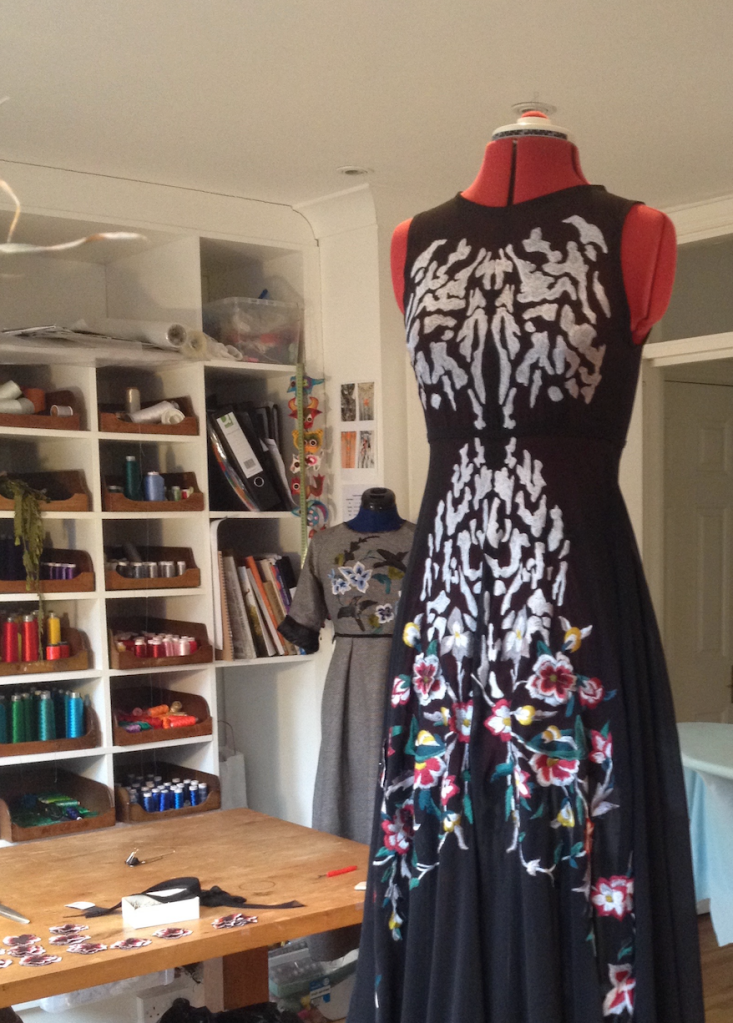
“I think now more than ever people want to see your process“
“I think documenting your work is very important, recognising and respecting the work that has gone into making it come to life. If I’m working on a collection I usually set a deadline for a photoshoot and keep making pieces right up until the day of the shoot. For me, it’s important to collaborate and to work with people who are good at what they do. Fresh eyes are always an added bonus too, especially if you have been isolated, working on this for weeks / months and a bit jaded from it.
I think now more than ever people want to see your process and to have more of an insight into the application of your craft and not just the finished piece. To be able to show the integrity of how things are made, traceability and authenticity especially in fashion is very important. Platforms like Instagram are changing the way we interact with people and how we choose what to show.
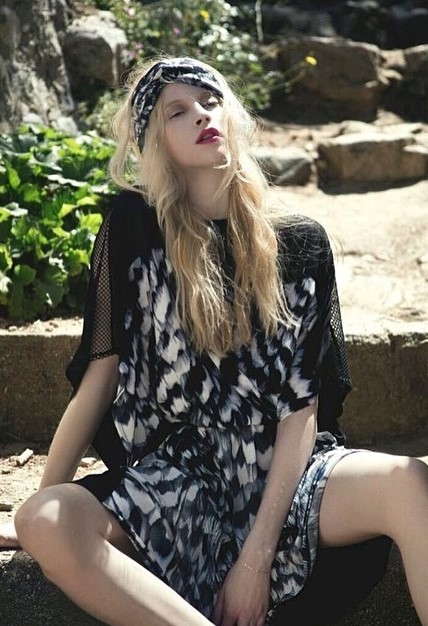
BEING IN OURSELVES:
Many creative people speak of periods of self doubt or imposter syndrome. It seems that choosing to persist with our creative projects takes great courage at times. In this section we ask: How has self doubt affected you, if at all? What have you done to bring yourself through difficult times and allow yourself to persist? What has helped you?
“I was so worried about paying the bills at stages that I have thought of throwing it all in many times but I still think back to that desk job and how unhappy I was. I have definitely struggled with my own self-doubt and imposter syndrome over the years and I don’t think it’s something that ever goes away. Being creative is incredibly personal and it can be daunting putting your work out there to be critiqued.
I am not great at promoting myself and I have come to discover I am a bit of an introvert. I don’t really like talking about myself and find it painfully hard to talk about my own work sometimes. Collaborating is a great way to work and has been very beneficial in the cross pollination of ideas and also the benefit of having another person to bounce off.
Going through a period of full-on anxiety and panic attacks taught me to take the foot off the pedal and slow down. I was working too much and felt like I was drowning. Looking after yourself both physically and mentally is so important. If you don’t it will end up choking your creativity and squeezing the love out of it. It’s important to not take it all too seriously either.
Instagram @jilldeburca
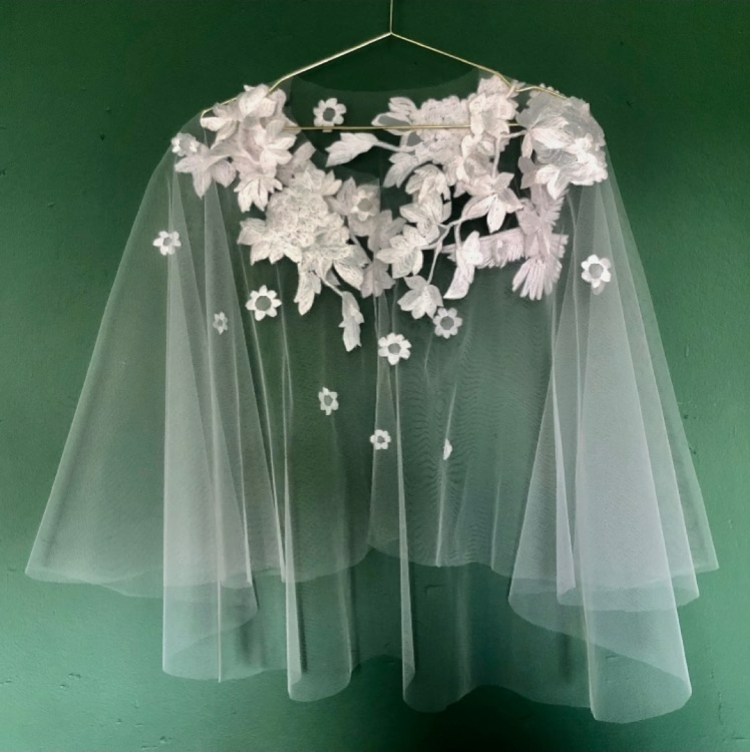
What beautiful work and a great interview. So inspiring.
LikeLike
Thank-you Jenny. Her work really is gorgeous, isn’t it? Beth
LikeLike